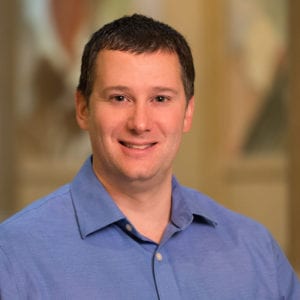
VERTEBRATE PALEONTOLOGY AT CARNEGIE MUSEUM OF NATURAL HISTORY
The mission of the Section of Vertebrate Paleontology at Carnegie Museum of Natural History is to increase scientific understanding of fossil vertebrates through original research, to collect and preserve fossil vertebrates through field exploration and curation of our collection, and to communicate the excitement of scientific discovery through museum exhibitions, public education, and outreach efforts.
The Section of Vertebrate Paleontology collection currently has more than 120,000 specimens that range in age from the Silurian to the Pleistocene with a worldwide geographical distribution, and it is still growing at a healthy pace. The collection boasts specimens that collectively represent all major vertebrate groups, including 472 holotype specimens, such as those of the iconic dinosaurs Diplodocus carnegii, Apatosaurus louisae, and Tyrannosaurus rex. This extensive record of extinct vertebrates offers fascinating insights into the history of Earth and its biota and has inestimable scientific value.
Highlights of the Vertebrate Paleontology Collection
- Bony (Osteichthyes and Acanthodii) and cartilaginous (Chondrichthyes) fishes from the Mississippian of Montana
- Pennsylvanian and Permian fishes, amphibians, and reptiles from the southwestern United States and the Dunkard Basin of Pennsylvania, Ohio, and West Virginia
- Permian reptiles from Madagascar
- Triassic dinosaurs and other archosaurs from Ghost Ranch, New Mexico
- Jurassic dinosaurs, especially sauropods from Utah and Wyoming—arguably the finest collection in the world (the 1909 discovery of Jurassic dinosaur bones in Utah by Carnegie Museum of Natural History collector Earl Douglass led to the creation of Dinosaur National Monument)
- Jurassic fishes and reptiles (e.g., pterosaurs, lepidosaurs, and turtles) from Germany and France, and Eocene teleost fishes from Monte Bolca, Italy—the best collections of these fossil vertebrates in the Western Hemisphere
- Cretaceous dinosaurs from the western United States, including the holotypic specimens of the non-avian theropods Tyrannosaurus rex and Anzu wyliei
- Cretaceous vertebrates (primarily fishes and marine reptiles) from Antarctica
- Eocene mammals, reptiles, and amphibians from central Wyoming and Utah—among the best in the world
- Eocene and Oligocene vertebrates, especially mammals, from the Sage Creek, Three Forks, and Kishenehn basins of western Montana
- Miocene vertebrates from western Nebraska from a site now preserved as Agate Fossil Beds National Monument
- Miocene mammals from Montana—the best from this time and area
- Miocene mammals from Samos, Greece—the finest surviving collection from this locality
- Pleistocene vertebrates from the Appalachian region
- High-altitude Rocky Mountain Pleistocene cave fauna
Section of Vertebrate Paleontology Collection Inquiries
Please contact the collection manager or curator at least one month in advance to schedule a visit. The collection is generally open for study Monday through Friday, 9 a.m.–5 p.m. If you would like to study specimens on exhibit, it is best to schedule your visit on a non-summer Tuesday, when the museum is closed to the public.
Loans are made to qualified institutions at the discretion of the curator, in consultation with the collection manager. Loans to graduate students will be addressed to their advisors. Specimens currently being used by in-house researchers may not be loaned until that work is completed. Specimens deemed by the curator to be too large for transport are not available for loan. The loan period is generally for two years, and extensions may be granted upon written request. CT scanning, laser scanning, digital modeling, destructive analysis, molding and casting, 3D printing, or preparation are prohibited without prior written consent from the curator.
History of the Section of Vertebrate Paleontology
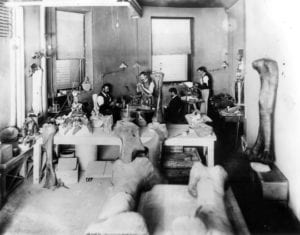
The outstanding fossil vertebrate collection at Carnegie Museum of Natural History has been accumulated by more than a century of fieldwork by Vertebrate Paleontology staff and acquisitions by the museum. The Section of Vertebrate Paleontology collection began in 1895 with the sponsorship of Andrew Carnegie. In the early 20th century, the Carnegie Corporation supported the museum’s numerous paleontological expeditions to the American West, building one of the best dinosaur collections in the world. More recent efforts by Vertebrate Paleontology staff have concentrated on collecting mammals, reptiles, and amphibians from the Cenozoic and tetrapods from the Paleozoic and Mesozoic. These field expeditions and the curation of the fossil collection have been supported by the National Science Foundation, the National Geographic Society, the American Chemical Society, the L. S. B. Leakey Foundation, the M. Graham Netting Fund of Carnegie Museum of Natural History, the National Park Service, the Institute of Museum and Library Services, Save America’s Treasures, and several other organizations.
Section of Vertebrate Paleontology Collection Featured in Museum Displays


In total, Vertebrate Paleontology has 252 specimens on exhibit at Carnegie Museum of Natural History. Dozens of fossils from the Vertebrate Paleontology collection are showcased in Carnegie Museum of Natural History’s flagship permanent exhibition Dinosaurs in Their Time. Dinosaurs in Their Time features numerous original fossil skeletons spanning the Mesozoic Era, or Age of Dinosaurs, displayed in scientifically accurate, immersive reconstructions of their respective habitats. Specimens from the Vertebrate Paleontology collection may also be seen in Cenozoic Hall, which present fossils of animals that lived during the last 66 million years of Earth’s history. Several fossils from the Vertebrate Paleontology collection are also on display in the Benedum Hall of Geology, and specimens that are being actively scientifically prepared or restored are often on view in the museum’s on-exhibit fossil laboratory, PaleoLab.
Meet the Researchers
MATT LAMANNA, Ph.D.
Mary R. Dawson Curator of Vertebrate Paleontology
AMY HENRICI, M.S.
Collection Manager


LINSLY CHURCH, M.S.
Curatorial Assistant


ANDREW McAFEE
Scientific Illustrator


DAN PICKERING
Scientific Preparator


JOE SAWCHAK
Collection Assistant


TYLER SCHLOTTERBECK
Collection Assistant


DAVID BERMAN, Ph.D.
Curator Emeritus
Vertebrate Paleontology Blogs

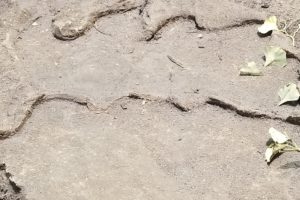
Stepping Back in Time
by Suzanne Nuss I grew up in the silent Canadian Arctic, so sounds switch me to alertness. Once alert, I pause to …
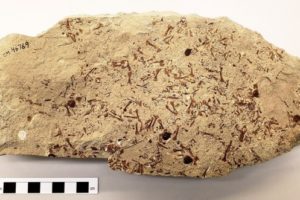
Hunting For Fossil Frogs In Wyoming
by Amy Henrici Collection managers at Carnegie Museum of Natural History (CMNH) typically spend their time on collection-based tasks. Sometimes, however, we …
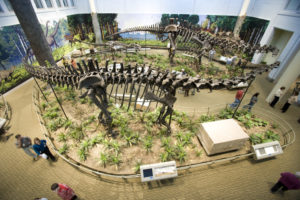
Jurassic Days: Icarosaurus
by Zach Lyons-Weiler Both visitors and staff love Carnegie Museum of Natural History’s Dinosaurs in Their Time exhibition for many reasons. For …

What Did Dinosaurs Sound Like?
A Brief Foray into Paleoacoustics in Science and Film by Niko Borish and Caroline Lee Did Dinosaurs Roar? When you think about …

MESOZOIC MONTHLY: Volaticotherium
by Lindsay Kastroll Once again, spring has sprung. Prepare to see the gorgeous forests of Pennsylvania launch back into action. I, for …

Mesozoic Monthly: Nasutoceratops
Although much of the Western world recognizes January 1 as the first day of the new year, many other cultures around the …

Mesozoic Monthly: Dreadnoughtus
Last January, we started out hopeful for 2020, but unfortunately it ended up being a very difficult year for almost everyone. After …

A Visit to the Mammoth Site, Hot Springs, SD
Did you know that not all museums display their fossil specimens mounted in life-like poses? At The Mammoth Site of Hot Springs, …

Mesozoic Monthly: Vegavis
Disclaimer: Our dinosaur paleontologist Matt Lamanna typically edits Lindsay Kastroll’s Mesozoic Monthly posts before they go live, but due to some much-needed …
